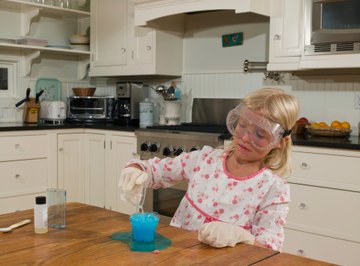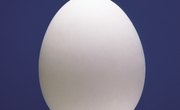
Density is an abstract concept for young students. Use creative experiments to demonstrate density visually at home or in the classroom. Use common items such as water, eggs, oil and salt to demonstrate density. Practice the experiments ahead of time to determine how much of the substances you will need and what results kids should expect.
Seven Layers of Density
Let kids visualize the concept of density with this experiment. Collect substances of various densities, including honey, light corn syrup, dish soap, water, vegetable oil, rubbing alcohol and lamp oil. Have kids guess the order of densities of the substances. Mix different colors of food coloring with each of the substances to distinguish them. Pour 1/2 cup of each substance into a clear glass or graduated cylinder. Observe how the substances layer in the glass according to their densities. Have students look up the exact densities of the substances to check their results.
Straw Colors
Place four cups on a table and add 1 cup of water to each one. Add 1 tsp. salt to one cup, 1 tbsp. salt to the second cup, 3 tbsp. salt to the third cup and 5 tbsp. salt to the fourth one. Stir each of the cups to make solutions of different densities. Drop a few drops of different colors of food coloring into each cup to help visualize the solutions. Close one end of a clear straw with a piece of sticky tack or clay. Drop several drops of each color of food coloring into the straw and watch the layers separate according to density.
Egg Float
Students make an egg float and test the densities of different objects. Have them fill a clear glass 3/4 full with water. Ask them to put a quarter, a cork and an egg into the glass of water and observe whether the objects sink or float. Ask them to add salt to the glass 1 tsp. at a time, stirring the glass after each addition. Eventually the egg will float because of the increased density of the water due to the addition of salt. Ask students to record the number of teaspoons of salt that made the egg float.
Hot and Cold
Discuss how temperature affects density with this experiment. Put cold water into one glass and hot water into a second glass. Ask students to put a few drops of food coloring into each glass and record their observations. The food coloring moves through the glass with hot water faster because hot water is less dense than cold water.
References
About the Author
Pauline Lovingood began writing professionally in 2011. She writes about health, fitness, medicine and travel for various websites. She graduated from Ohio Wesleyan University with a Bachelor of Arts in health and human Sciences.
Photo Credits
D. Anschutz/Digital Vision/Getty Images
